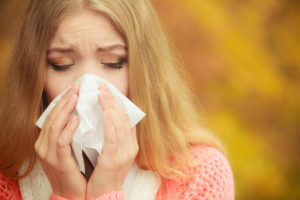
What is Ragweed? As an allergy specialist Centreville, VA has to offer might attest, ragweed is a tough and hardy soft-stemmed weed that can grow well along roadsides, riverbanks, vacant lots, and fields. It belongs to a genus called Ambrosia and there are 17 different species of ragweed. The height of the plants generally range from about 3 inches to 12 feet.
The plants mature in mid-Summer and produce small flowers. Warmth, decreased humidity, and active breezes after sunrise help create the ideal environment for ragweed flowers to release their pollen. Each individual plant can release up to one billion pollen grains. Though most of the released pollen stays in the general area, some grains can travel as many as 500 miles in dry and windy conditions. This helps explain why pollen counts are usually lowest on rainy days and cool mornings. Individual plants pollinate only for one season but the seeds survive in the soil from year to year producing fresh crops each year. Over the past decade, the EPA has noticed a prolonged ragweed season in the Washington, DC area. Climate changes and increased carbon dioxide levels in the atmosphere may play a role in this prolongation of the ragweed season.
How Does it Cause Allergies? Though ragweed pollen is generally harmless, in a genetically susceptible individual, the immune system can mistake it as potentially dangerous invader and mount a defensive attack. This process triggers antigen (ragweed) vs. antibody (immunoglobulin) reactions on exposure, resulting in the release of chemical mediators like histamine which are responsible for the classic annoying hay fever and/or asthma symptoms. An estimated 15% of all Americans are sensitive to ragweed. As an allergy specialist in Centreville VA may explain, the risk of developing sensitivity is higher in people with other types of allergic disorders like eczema (i.e., atopic dermatitis) and asthma and in those with a family history of similar disorders.
What are the Symptoms?
- Itchy nose, eyes, throat, and ears
- Watery and/or red eyes
- Runny nose, nasal congestion, and/or post-nasal drip
- Sneezing
- Post nasal drip and/or throat irritation
- Cough, chest tightness, wheezing, and/or shortness of breath
- Sinus pressure and/or headaches
- Fatigue
- Snoring
- Clogging and/or popping of the ears
Though “hay fever” is the term commonly in vogue, “seasonal allergic rhinitis” is a more accurate description of the condition.
Oral allergy syndrome (i.e., Pollen-food allergy syndrome) is a condition where one experiences itching of the lips, mouth, and/or throat after eating fresh fruits and/or vegetables. The cause of the phenomenon is a cross-reactivity between similar proteins in the pollen and the fruits and/or vegetables. Ragweed pollen typically cross-reacts with melons, bananas, cucumbers, avocados, kiwi, and zucchini.
How is it Diagnosed? An allergy specialist Centreville, VA residents turn to for help will take a thorough history and physical examination. A simple allergy skin test can be performed by applying the diluted allergen (ragweed) to the surface of the skin. A raised, itchy, red bump after 15 to 20 minutes at the site of application confirms sensitivity to the allergen. Alternatively, a blood test can also be done.
What Can Be Done to Minimize the Symptoms?
- Keeping track of pollen counts and avoiding outdoor activities to the possible extent on high pollen days.
- Keeping the windows closed in homes and automobiles and running air-conditioning.
- Changing clothes and showering before going to bed.
If the symptoms are bothersome in spite of environmental control, several medications like antihistamines, nasal sprays, eye drops, and inhalers may be needed. Keep in mind that most medications only mask the symptoms without treating the underlying cause and can cause undesirable side effects. Many individuals also become tolerant to an antihistamine and what had helped initially becomes ineffective.
Allergen immunotherapy (i.e., allergy shots, allergy injections, allergy desensitization) is a process of increasing tolerance to the allergens by exposing the immune system to gradually increasing the concentrations of the antigen at regular intervals. This process has the potential to offer long-term benefit to many people who experience bothersome symptoms every year. Allergy shots are effective in 80-85% of individuals and have been used in the U.S. for over 100 years.
A Centreville, VA allergy specialist at Black & Kletz Allergy can treat both adults and children with ragweed allergies in the Washington, DC, Northern Virginia, and Maryland metropolitan area. We have convenient offices in Washington, DC, McLean, VA (Tysons Corner, VA), and Manassas, VA that all offer on-site parking. The Washington, DC and McLean, VA offices are Metro accessible and there is a free shuttle between the McLean, VA office and the Springhill metro station on the silver line. Please call us for an appointment or alternatively you can click Request an Appointment and we will respond within 24 hours by the next business day. We can also answer your questions and concerns about other allergic and immunologic disorders, since we have been providing allergy, asthma, and immunology care to the local community for over 50 years. If you’re looking for an allergy specialist Centreville, VA patients recommend, turn to a board certified allergist at Black & Kletz Allergy.


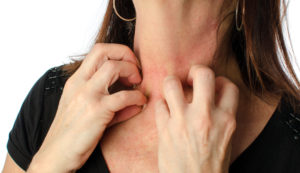 Everyone has had an itch here or there, but as an allergist Washington DC patients rely on might attest, generalized itching (itching all over the body) does not occur in everyone.
Everyone has had an itch here or there, but as an allergist Washington DC patients rely on might attest, generalized itching (itching all over the body) does not occur in everyone. 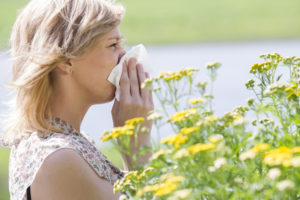 As the Summer draws closer to an end in Gainesville, VA, Tysons Corner, VA, Falls Church, VA, and the rest of the Washington, DC metropolitan area, you may be searching for an allergist in Arlington, VA as certain allergens become more prevalent which tend to cause an increase in allergy symptoms in certain allergic individuals. In the Washington, DC, Northern, VA, and Maryland metro area, mid-August marks the time of the year when ragweed begins to pollinate. The
As the Summer draws closer to an end in Gainesville, VA, Tysons Corner, VA, Falls Church, VA, and the rest of the Washington, DC metropolitan area, you may be searching for an allergist in Arlington, VA as certain allergens become more prevalent which tend to cause an increase in allergy symptoms in certain allergic individuals. In the Washington, DC, Northern, VA, and Maryland metro area, mid-August marks the time of the year when ragweed begins to pollinate. The 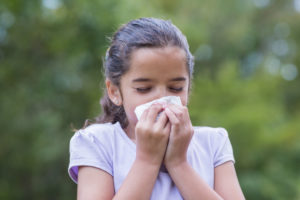 The Allergists Tysons Corner VA Trust Explain the Effects of Climate Change on Your Allergies The climate in places like Tysons Corner, VA, Falls Church, VA, and Gainesville, VA, as well as the rest of the Washington, DC metropolitan area, plays a significant role in producing allergens that annoy sensitized individuals. The DC metro area was built on a swamp and there tends to be high counts of mold spores throughout the year, particularly from the Spring through the Fall. Our humid Summers also account for excessive mold growth. Pollen production is also a major problem in the Washington, DC metro area, mostly in the Spring and Fall.
The Allergists Tysons Corner VA Trust Explain the Effects of Climate Change on Your Allergies The climate in places like Tysons Corner, VA, Falls Church, VA, and Gainesville, VA, as well as the rest of the Washington, DC metropolitan area, plays a significant role in producing allergens that annoy sensitized individuals. The DC metro area was built on a swamp and there tends to be high counts of mold spores throughout the year, particularly from the Spring through the Fall. Our humid Summers also account for excessive mold growth. Pollen production is also a major problem in the Washington, DC metro area, mostly in the Spring and Fall.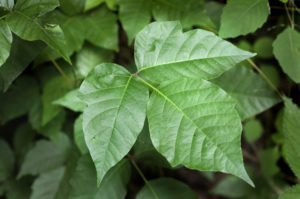 The offending oils can be found on the leaves, stems, flowers, and roots of these plants. Exposure to even a small amount of urushiol can result in a severe rash in susceptible people. Touching the plants directly or indirect contact through pets, tools, and/or clothing can lead to the rash. Airborne exposure can also occur especially when the plants are burned.
The offending oils can be found on the leaves, stems, flowers, and roots of these plants. Exposure to even a small amount of urushiol can result in a severe rash in susceptible people. Touching the plants directly or indirect contact through pets, tools, and/or clothing can lead to the rash. Airborne exposure can also occur especially when the plants are burned.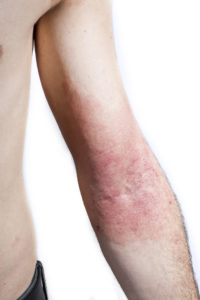 Thoroughly rinsing the exposed area with large amounts of warm water as soon as possible after known contact with plants may help remove the offending oily resins to some extent. After the rash appears, some helpful treatments consist of the following:
Thoroughly rinsing the exposed area with large amounts of warm water as soon as possible after known contact with plants may help remove the offending oily resins to some extent. After the rash appears, some helpful treatments consist of the following: From Allergy Doctors Vienna VA Patients Trust Now that the weather in Tysons Corner, VA, Gainesville, VA, and Falls Church, VA and the rest of the Washington, DC metropolitan area has warmed up, as it is now Summer, the risk of an
From Allergy Doctors Vienna VA Patients Trust Now that the weather in Tysons Corner, VA, Gainesville, VA, and Falls Church, VA and the rest of the Washington, DC metropolitan area has warmed up, as it is now Summer, the risk of an 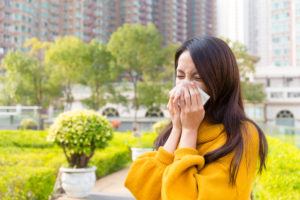 There has been an increase in the incidence of allergic diseases over the past 20-30 years and this phenomenon is more pronounced in industrialized countries compared to developing countries. Many researchers believe that environmental and dietary changes play major roles in the development of allergies. This is true in areas such as Falls Church, VA, Gainesville, VA, and Tysons Corner, VA as well as the rest of the Washington, DC metro area.
There has been an increase in the incidence of allergic diseases over the past 20-30 years and this phenomenon is more pronounced in industrialized countries compared to developing countries. Many researchers believe that environmental and dietary changes play major roles in the development of allergies. This is true in areas such as Falls Church, VA, Gainesville, VA, and Tysons Corner, VA as well as the rest of the Washington, DC metro area. The Washington, DC, Northern, Virginia, and Maryland metropolitan area has its share of pollutants in its air as well as the many allergens that are known to be prevalent. The allergens that are common in the DC metro area include tree and grass pollens in the Spring, ragweed pollen in the Fall, and mold spores which are perennial in nature. The molds are year-round due to the history of Washington, DC being a swamp many years ago. The humidity also tends to be high in the area, which favors the growth of molds. Regarding pollutants, there are many different types of pollutants in the Washington, DC metropolitan area including such cities as Gainesville, VA, Falls Church, VA, and Tysons Corner, VA.. Some of these pollutants include carbon monoxide, ozone, organic dusts and other fine particulate matter, nitrogen dioxide, sulfur dioxide, and lead emissions.
The Washington, DC, Northern, Virginia, and Maryland metropolitan area has its share of pollutants in its air as well as the many allergens that are known to be prevalent. The allergens that are common in the DC metro area include tree and grass pollens in the Spring, ragweed pollen in the Fall, and mold spores which are perennial in nature. The molds are year-round due to the history of Washington, DC being a swamp many years ago. The humidity also tends to be high in the area, which favors the growth of molds. Regarding pollutants, there are many different types of pollutants in the Washington, DC metropolitan area including such cities as Gainesville, VA, Falls Church, VA, and Tysons Corner, VA.. Some of these pollutants include carbon monoxide, ozone, organic dusts and other fine particulate matter, nitrogen dioxide, sulfur dioxide, and lead emissions. Any provider of
Any provider of  As allergists that Gainesville, VA calls upon, we know that when one thinks about allergies and allergy symptoms, dental problems usually do not come to mind. In fact, most people tend to separate dental and medical problems into two distinct categories. Medical diseases can and do influence your dental health. Most people know that certain heart defects and murmurs may require premedication with antibiotics in order to prevent subacute bacterial endocarditis. Patients with GERD (gastroesophageal reflux disease), Sjögren’s syndrome, anorexia, and bulimia are more prone to cavities of the teeth. There are many more medical conditions which can have profound implications on the health of one’s teeth which will not be discussed.
As allergists that Gainesville, VA calls upon, we know that when one thinks about allergies and allergy symptoms, dental problems usually do not come to mind. In fact, most people tend to separate dental and medical problems into two distinct categories. Medical diseases can and do influence your dental health. Most people know that certain heart defects and murmurs may require premedication with antibiotics in order to prevent subacute bacterial endocarditis. Patients with GERD (gastroesophageal reflux disease), Sjögren’s syndrome, anorexia, and bulimia are more prone to cavities of the teeth. There are many more medical conditions which can have profound implications on the health of one’s teeth which will not be discussed.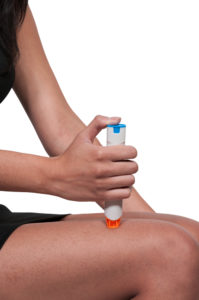 Severe sensitivity to certain foods, insect venoms, and certain medications can lead to a life- threatening reaction called
Severe sensitivity to certain foods, insect venoms, and certain medications can lead to a life- threatening reaction called  Sleep disorders affect about 30% of the population. Several sleep disorders have been linked to allergies. People who suffer from
Sleep disorders affect about 30% of the population. Several sleep disorders have been linked to allergies. People who suffer from 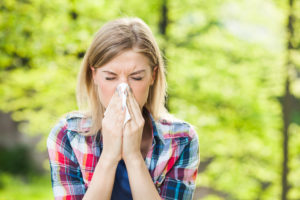 Well it is the middle of March in
Well it is the middle of March in  It is estimated that about 3 million children and adolescents in the U.S. have
It is estimated that about 3 million children and adolescents in the U.S. have 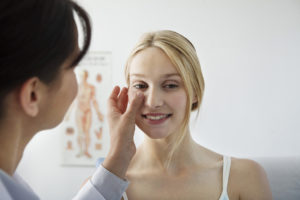 More than 22 million people in the U.S. suffer from
More than 22 million people in the U.S. suffer from 









